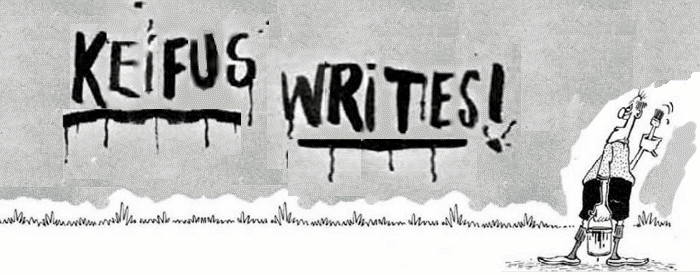Review: Anathem, by Neal Stephenson
Anathem is a great illustration of how, even when every idea has already been played out, a great author can make it all look utterly new. It’s another story playing out the idea of traveling to an alternate reality, a what-if tale, a close companion of the nerdier genres, but it’s still been around long enough to become a well-embedded trope, one which you’d think (and this is the last time I’ll ever cite it, I swear) should have been killed dead in 1971, with a brilliant little short that illustrated how when all story outcomes are accessible, then none of them mean anything. Well, au contraire, mon frère. There are still great new ways to do it, and like everything else, it all comes down to execution, connections, and character. This is one of the nerdiest novels I’ve ever read, in fact, and it’s unreservedly entertaining as hell. Here, Stephenson applies some real thinking to speculations on the allowed trajectories of how one might traverse one what-if universe to the next, or how you a character might sample alternate versions of reality in advance of the dang wavefunction collapsing on him. He ties the ideas into some fairly legitimate interpretations of quantum mechanics, consciousness, physical cosmology, metafictional analysis, and, of all things, some kind of neo-Platonism in which our many worlds may additionally include ones of pure(r) ideas, because, hey man, number theory and plane geometry will still hold even when your fundamental constants get a slightly different roll of the polycosmic dice. Putting all those things together makes the many worlds interesting all over again.
And if this still doesn’t sound dorky enough for you, then consider that the setting is one such alternate reality in which academic types are customarily, by some three or four millennia of tradition (accounting for the violent vagaries of human nature at that), shut out from society in walled clockwork monastery/colleges (maths, as Stephenson calls them), forbidden from (much) high technology, and left to delve into purely intellectual human pursuits, chasing their tails around philosophies and famous thinkers which, as even this epistemologically limited reviewer will recognize, have rather direct traditional Earthican analogues (in context, Stephenson throws out a multiversal reason for that). And we’re put right in there. Within the walls, formal reasoning and edifying dialogue are the chief modes of expression. With that kind of background, and that kind of purpose, the story just doesn’t sound like it should be this fun, but it is.
Stephenson wisely chooses a younger set of acolytes to flesh it all out, which ends up being handy in lots of ways. It keeps the prose and dialogue from getting too abstract, for one thing, where Erasmas and the gang aren’t quite so far from the outside world to have forgotten it, and the setting is explored effectively as they compare and contrast the reality with their memories. In any case, Neal Stephenson is about the last guy to keep the language on some dry scholarly level, although he’s definitely someone I would expect to play around with what’s, here, basically grad-student style wit. The narration seems to get more colloquial as the novel passes, and I don’t know if it’s because I got used to all the proper names and clever alt-universe word fusions, because the characters interacted more outside the “concent,” or just because he fell back into a familiar American-style writing groove. The characters are good revealers of concepts too: it’s natural for young eggheads to be excited to expound goofily on their newly-attained knowledge, which gives all that philosophical info-dumping the fun vibe of the world’s most Socratic weed-baked dorm room. [It also no doubt lets Neal Stephenson cover his ass as a mere interested layperson. But then again, it seems that science fiction has to be really silly to get scientist readers to object, and the author here appears to be up on his metaphysics just fine.] And of course, they have the analytic tools to decode the conspiracy from scant evidence. One great scene has the acolytes using geometry and a pinhole camera. Centering the story on young learners also offers a few natural arcs to hang the story on: discovery of the external world (and then some), and we get a charming little coming of age aspect too, young goofballs falling in love. Mostly, we follow them along as they try to figure out what the hell is going on.
The novel also draws (and it’s no spoiler to reveal this) on the tradition of a science fiction first contact tale. There’s a ship floating in orbit, and it’s hard to spot from inside the tower, but the entirety of civilization is liable to go apeshit when the information gets out. It’s the meat of it all, it’s the device that drives the plot, but the ship and the aliens are almost anticlimactic when we finally get there. Okay, they come from a different cosmos and all—their matter is fundamentally different--but the (alien) people in there look like us. A character observes that they suffer such disappointingly banal shit as committee meetings, that more cultural variation is observed on their own planet, almost as if the author is taking a potshot at some of the more common genre flaws. It sounds like ideas transposed by some primeval geezers of science fiction into a mediocre short story, or maybe an episode of Star Trek. It’s more philosophically oriented than you’d normally get from this sort of thing, but it almost could be. Instead, it’s a wonderful book. It’s all in how you tell it.

No comments:
Post a Comment